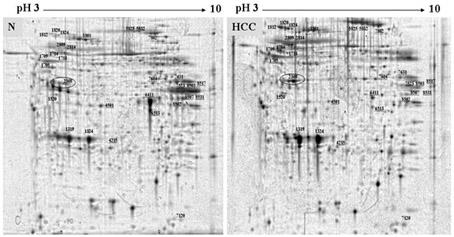Cathepsin D proenzyme ConA-pCD specifically combined with concanavalin A in serum and application thereof
A cathepsin, specific binding technology, applied in the field of biotechnology applications, can solve the problems of unsatisfactory sensitivity and specificity, hindering the monitoring of high-risk groups of liver cancer, etc.
- Summary
- Abstract
- Description
- Claims
- Application Information
AI Technical Summary
Problems solved by technology
Method used
Image
Examples
Embodiment 1
[0037] A cathepsin D zymogen ConA-pCD that specifically binds to concanavalin A in serum is prepared by the following method: ① Preparation of concanavalin A affinity chromatography column: in a Poly-Prep chromatography column Add 100 μl concanavalin A agarose gel (purchased from Vector Laboratory), centrifuge at 500 rpm for 2 min and discard the outflow, then add 2 ml glycoprotein binding buffer containing 0.1% (v / v) Triton X-100 solution, incubated on a rotary shaker for 10 min, discarded the effluent after centrifugation, then added 2 ml glycoprotein binding buffer, incubated on a rotary shaker for 10 min, centrifuged at 500 rpm for 2 min, discarded the effluent, and set aside; the glycoprotein The binding buffer consists of: 30 mM Bis-Tris, 150mM NaCl, 1mM CaCl 2 , 1mM MnCl 2 , pH 7.2;
[0038] ②Take 20 μl of serum, centrifuge at 13,000 rpm, take 20 μl of supernatant and add glycoprotein binding buffer to a final volume of 1ml, then transfer to the above-prepared concana...
PUM
 Login to View More
Login to View More Abstract
Description
Claims
Application Information
 Login to View More
Login to View More - R&D
- Intellectual Property
- Life Sciences
- Materials
- Tech Scout
- Unparalleled Data Quality
- Higher Quality Content
- 60% Fewer Hallucinations
Browse by: Latest US Patents, China's latest patents, Technical Efficacy Thesaurus, Application Domain, Technology Topic, Popular Technical Reports.
© 2025 PatSnap. All rights reserved.Legal|Privacy policy|Modern Slavery Act Transparency Statement|Sitemap|About US| Contact US: help@patsnap.com



